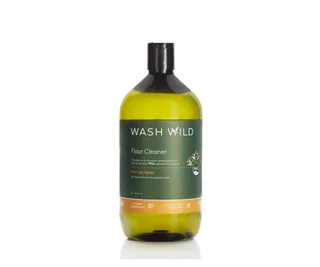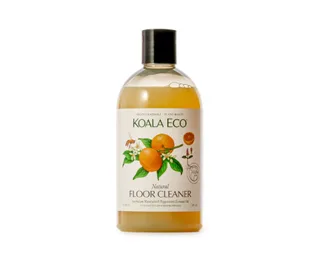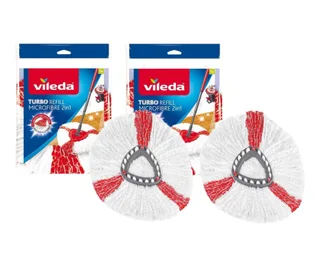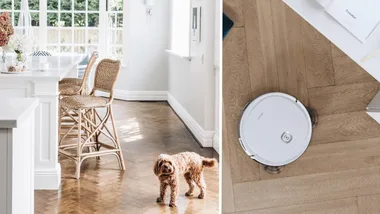Clean floors have always been important to me, but my fastidiousness only tripled a couple of years ago when I moved into a home with beige-coloured floor tiles that showed every bit of dust and grime. Despite this, traditional string mops have always kind of grossed me out with their cumbersome buckets, slippery foot pedals or inept wringers that left the mop dripping wet no matter how much of my back I put into it. Then there’s the fact that the mop head, once used, never really feels quite clean again or the fact that the mop (along with its attached handle) must be stored outdoors in the elements until the strands are bone dry.
I can’t remember exactly how it happened, but on a trip to get bits and bobs for said house, I begrudgingly placed a newfangled “spin mop” into my trolley. Hey, it’s on special, I told myself, thinking it would be just as disappointing as any other mop I’d ever tried. But since that day, I haven’t looked back. The spin mop is hands down one of the best cleaning products I’ve ever used and I now sing its praises to anyone who’ll listen. Here’s my first person review of why the spin mop isn’t just like ‘any other mop’ and why you should absolutely believe the hype and promptly make the switch.

Our spin mop review verdict
- Our rating: (9 of 10)
- Why we rated it a (9/10): It makes cleaning floors thoroughly a breeze and eliminates many of the pinch points of a traditional mop. One point has been deducted as it’s unclear whether any recycling programs exist for spent microfibre mop heads.
Pros
- Affordable
- Easy to use
- Easy to clean
- Traps over 99% of germs without harsh chemicals
- Easy to store
- Versatile with many applications around the home
- Mop heads last a long time
Cons
- Difficult to determine whether any recycling programs exist for spent mop heads
- Replacing the mop heads may be expensive over time
- It takes a bit of practice to maneouver the spin mop to perform other tasks such as wiping down skirting boards
Which spin mop is best?
Full disclaimer: The spin mop I use, love and refer to in this review is the Vileda Easy Wring & Clean Turbo but I want to be clear, it’s not the brand I’m devoted to, it’s the spin mop mechanism. Other similar products on the market include the Vileda Advanced Rinse Clean (which has two water reservoirs, one for clean water and one for dirty water), the Sabco 2-Action Clean Spin Mop and the Oates Spin and Clean Compact Mop.
Some spin mops have smaller buckets which are easier to store and ideal for small homes and apartments, while others have larger buckets that make cleaning large spaces a breeze. My tip? When shopping for a spin mop take a look at how much mop-head refills cost and factor that into your decision.
If you’re on TikTok, you may have noticed that the O-Cedar spin mop seems to reign supreme. O-Cedar is Vileda’s US-based sister company.
The best spin mops and floor cleaners to buy 2024
What’s so special about spin mops?
Spin mops solve so many of the issues I had with traditional cotton string mops. They’re easier to use, easier to wring out, easier to clean and, with good care, the microfibre mop heads last a really long time.
- Spin mops have detachable mop heads that are designed to be machine-washable and quick-to-dry
- Detachable mop heads mean you can change the mop head frequently and prevent cross-contamination from room-to-room
- Spin mops are lightweight to carry
- Wringing out a spin mop requires virtually no physical exertion as the centrifugal force created by the spinning mechanism draws out all excess moisture
- Spin mop heads are made from microfibre which can trap over 99% of germs using just water, meaning less money spent on harsh chemicals
- Spin mops are so versatile online cleaning gurus have been using them to wipe down kitchen cabinet door fronts, skirting boards, walls, bathroom surfaces and more
- Price-wise, spin mops are on par with traditional string mops, with prices starting at around the $40 mark
- Some spin mop buckets have two water reservoirs, meaning the clean water and dirty water never mix

How to use a spin mop
- Fill the bucket with warm water up to the maximum water line. Optional: add your floor cleaner of choice.
- Attach the mop head to the handle and dunk into the bucket of warm water.
- Place the mop head into the spin wringer and pump the foot pedal. For a deep clean, pump the pedal 2-3 times. For a lighter, drier clean, pump the pedal 5-6 times.
- Mop your floors then rinse, wring and repeat.
Results from our test
In case I haven’t made it clear already, I’m a big fan of spin mops. In terms of functionality, cleanliness and ease-of-use, I can’t think of a single reason anyone in the market for a new mop would opt for a traditional, non-spin version.
Many traditional mop heads are attached to the handle, making them difficult to wash thoroughly and dry completely. They’re also a nightmare to store because you need to wait until the mop head is bone dry before it can be stored in a broom closet. Old-fashioned string mops also tend to be made from cotton, which swells in water, becoming far too heavy to launder in a domestic washing machine.
Spin mop heads are completely detachable from the handle, meaning they’re super simple to clean (we’ll get to the nitty-gritty of cleaning a spin mop head in a moment). Spin mop heads are made from microfibre, which is scientifically proven to trap dirt, dust and over 99% of germs using just water.
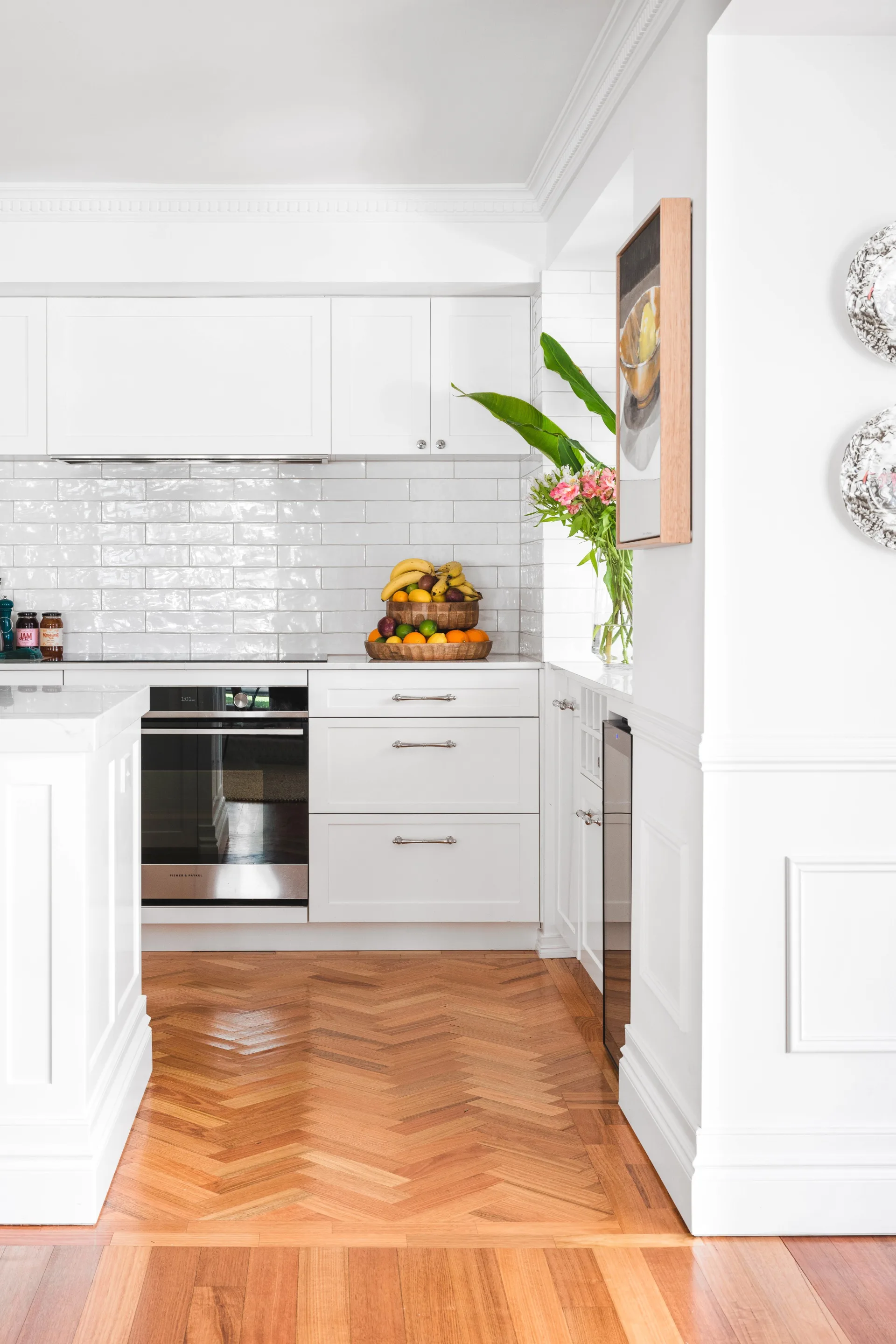
While spin mop manufacturers claim you only need to use water, I personally like to add a gentle cleaning solution to my mop water. In the past I have used a capful of methylated spirits, a drop of dish soap and a few drops of essential oil to clean my floors but recently I have been obsessed with (major understatement) an incredible universal cleaner, For All Australia, a product formulated and produced by a small, female-founded business in Melbourne, VIC.
Spin mops are also lightweight and designed to be machine washable, meaning you can reuse it time and time again. Brands like Vileda recommend replacing the mop head with a refill every three months but I’ve got a refill at home that’s about two years old and it still looks and feels brand new.
But let’s not forget about the other crucial components of a mop: the bucket and the wringer. I can’t tell you how many times I almost fell head over heels trying to step on a pedal to bring two rollers together to squeeze the juice out of an old-school string mop. Or what about the ‘press wringer’ where you dangle the strands of the mop head into the basket and huff and puff as you apply your entire body weight just to elicit a few measly drops from the mop head? No thanks! All of that unnecessary effort is completely eliminated with a spin mop, which requires just a couple of graceful foot pumps to let the centrifugal force of the spinning mechanism do the work for you. It works just like a salad spinner, but for your floors.
What’s better, a spin mop or a flat mop?
While other types of mops – such as spray mops or flat mops – are certainly convenient and fabulous for quick clean ups, I personally find that, when used over a long period of time, they tend to leave an almost undetectable layer of cleaning product on the floor that causes stickiness, streaks and even seems to attract more grease and grime. Spin mops are still convenient to use but they really leave your floors squeaky clean.

Overall, is a spin mop worth it?
Absolutely. I purchased my spin mop with my own money and I believe it’s worth every cent. Whenever friends tell me that they’re having trouble cleaning their floors or achieving a streak-free finish, the first question I ask is ‘What mop are you using?’ and if they don’t answer with ‘A spin mop’ I tell them to make the switch immediately. In fact, a friend recently told me they bought a spin mop (on my recommendation) and couldn’t believe the difference it made to the cleanliness of their floors after months of trialling cleaning product after cleaning product.
How to clean a spin mop
While most spin mop manufacturers recommend replacing the mop heads regularly (about every three months) I believe it’s totally possible to use them for far longer than that. Here’s how I clean my spin mop head and keep it looking like new.
After I finish mopping, I drain and rinse the bucket and refill it halfway with clean water. I rinse the mop head thoroughly, replacing the water as necessary until the mop rinses clear. Then I detach the mop head and place it in a sink or bucket of warm water and a scoop of oxygen bleach (i.e. Napisan). Sometimes I also add liquid disinfectant such as Pine-O-Cleen or antibacterial laundry sanitiser (follow the product instructions for the correct dosing).
I allow the mop head to soak for at least 30-minutes before placing it in the washing machine and running it on a warm to hot cycle (Vileda recommend a maximum temperature of 30 degrees celsius) with my usual washing detergent. If it’s a sunny day, I hang the mop head on the line to dry, but there have been times when I’ve had to pop it into my heat pump dryer and had no issues whatsoever.
Note: While many cleaning influencers soak their mop with chlorine bleach, manufacturers do not recommend this as it can degrade the microfibres, meaning they will shed lint and wear out much faster.
Where to buy a spin mop
Spin mops are available to buy at almost any store where cleaning products are available, including:
 Photography: Louise Roche | Inset: Vileda
Photography: Louise Roche | Inset: Vileda











